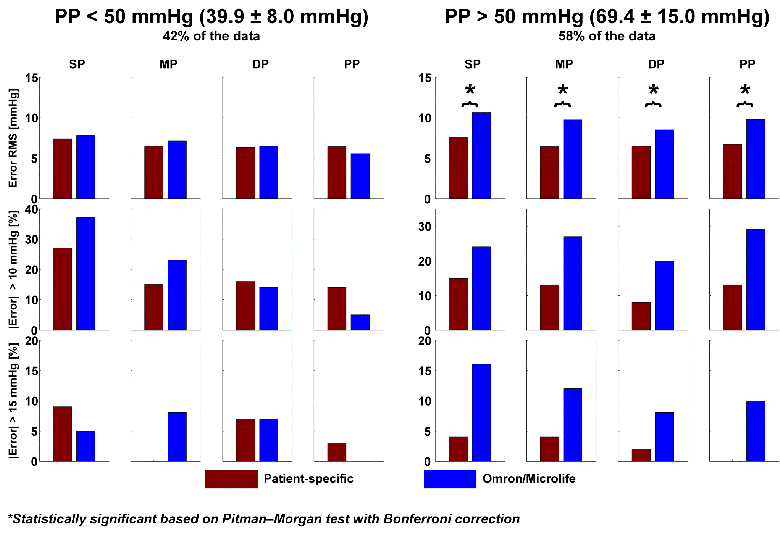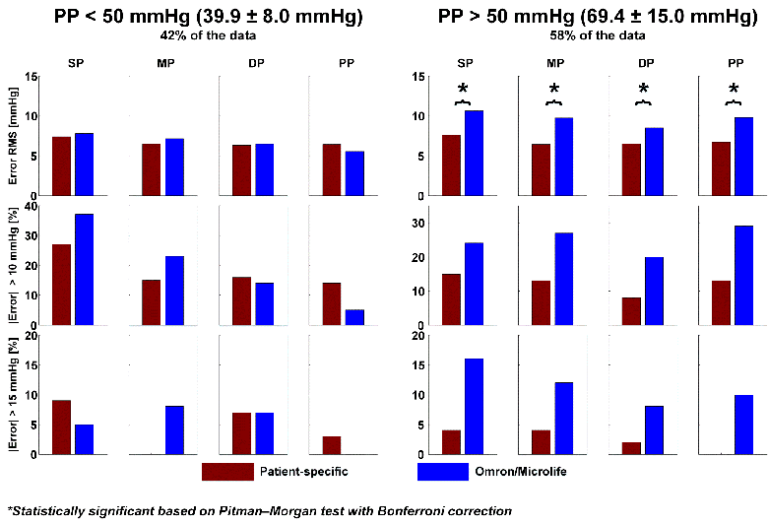
Oscillometric devices are widely used for automatic cuff blood pressure (BP) measurement. These devices estimate BP from the oscillometric cuff pressure waveform using population average methods. Hence, the devices may only be accurate over a limited BP range. The objective was to evaluate a new patient-specific method, which estimates BP by fitting a physiologic model to the same waveform. One-hundred and forty-five cardiac catheterization patients and normal adults were included for study. The oscillometric cuff pressure waveform was obtained with an office device, while reference BP was measured via brachial artery catheterization or auscultation, during baseline and/or nitroglycerin administration. Fifty-seven of the subject records were utilized for refining the patient-specific method, while the remaining 88 subject records were employed for evaluation. The precision errors for all BP levels of the patient-specific method ranged from 6.3 to 7.6 mmHg. These errors were significantly lower than those of the office device (by 29% on average) in subjects with high pulse pressure (>50 mmHg) while being comparable to those of the device in subjects with normal pulse pressure (<50 mmHg). The bias and precision of the differences in repeated estimates for all BP levels of the patient-specific method ranged from 0.1 to 1.1 mmHg and 2.1 to 5.9 mmHg, respectively. These precision differences were significantly lower than those of the office device (by 64% on average). The patient-specific method may afford more accurate automatic cuff BP measurement in patients with large artery stiffening while limiting the number of required cuff inflations/deflations per measurement.

Patient-Specific Oscillometric Blood Pressure Measurement: Validation for Accuracy and Repeatability
Sign-in or become an IEEE member to discover the full contents of the paper.
